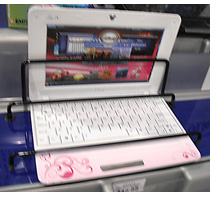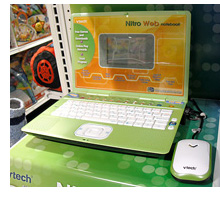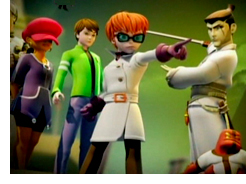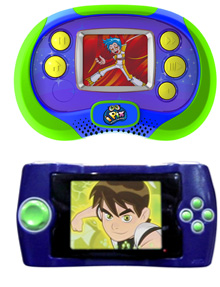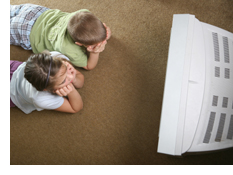Sunday, November 8th, 2009

In the last week of October, I was invited to participate in a conference that was held at the Google headquarters in Mountain View, CA called Breakthrough Learning in a Digital Age. While I was at the event I had the opportunity to interview a number of thought leaders involved in the world of technology and learning. To celebrate the 40th anniversary of Sesame Street, I thought it fitting to begin with an interview I had with Gary Knell, President and CEO of Sesame Workshop. The following is a transcription of our discussion. Portions of this interview were edited for clarity. Stay tuned for more interviews in the coming days and weeks.
QUICK QUESTION PICKER:
When looking at expanding into other mediums, how will you apply the Sesame philosophy?
In terms of metrics, do you see Sesame’s on air numbers going down and online numbers going up?
Is it more challenging today for creators of younger children’s content to be on air?
Do we need the Children’s Television Act for other media formats?
INTERVIEW:
Scott Traylor: Congratulations on the upcoming 40th anniversary of Sesame Street. It’s amazing to think how far the Sesame Street show has come, a show that is often called the “educational television standard.†When you look at expanding into other mediums, how do you think you will be applying that same Sesame philosophy?
Gary Knell: Well the show was invented 40 years ago and has now won more Emmy Awards than any television show in history. Recently we were awarded the lifetime achievement award at the Emmy’s with a standing ovation from, I think, everyone who ever worked in daytime television. But we know today that children are using applications that weren’t invented back when we started the show, and media and technology is getting faster, smaller, and cheaper. So it’s a world of on demand media, portability, those are places that we have to be because those are the access points to where kids are going to find Sesame Street. This was the first year we have ever seen more people and more children access Sesame Street content off television than on television. That’s through video on demand, that’s through iTunes, that’s through YouTube, that’s through our website. It’s through all of the different ways in which we are spreading our content now because that’s where the audience is going. (Return to Question Picker)
Traylor: So if you were just looking at the metrics of how viewers are watching Sesame Street, you see on air numbers going down and online numbers going up?
Knell: Well I think you’re generally seeing that across television, and certainly network television and PBS is no exception to that because there are a couple of things happening. Sesame Street was one of two preschool shows in 1988. Today there are 54 preschool shows on television. If you just look at market share, you’re not going to have the same market share today that you did 20 years ago. But more importantly, kids and parents are just accessing media differently today. For example, I was just chatting with someone at the University of California here who told me about her daughter who does not watch television but when she sees mom on her laptop, sits down in her lap and says, “Can we watch Elmo for ten minutes?†And I think that’s what’s happening now. I think you’re finding parents who are trying to have more of a control over their child’s viewing habits and behaviors. The TV becomes less of an available babysitter. Interactive technologies give us all the ability to have a more vibrant, richer learning experience than one-way television. (Return to Question Picker)
Traylor: Do you think it’s more challenging today for creators of younger children’s content to be on air? In part I look at the example of Viacom recently folding the popular preschool channel Noggin into Nick Jr. I see this move as something that’s a detriment to the entire preschool space. It’s too bad there aren’t more outlets like that.
Knell: Yeah, I think there were a combination of factors to that decision which may have had to do mostly with branding, as well as the economics of children’s programming, because there are 54 shows, so I think Nickelodeon probably made the decision that, well, we need to be under this umbrella because it will attract more people to watch our programs. But I agree with you. I think we have to have some safe spaces for children, where moms and dads can leave their kids in a place where they’re not going to be marketed to, where they’re going to be safe from commercial messaging, and it’s a place where kids are going to have a learning experience. Because we do know, even with the youngest kids, that television teaches. As Joan Ganz Cooney always says, “It’s not whether television teaches, it’s what does it teach.†So we’ve got to be in those spaces today just as we were in 1969. (Return to Question Picker)
Traylor: Related to those safe spaces for children, I know earlier this summer you were testifying on Capitol Hill in front of Congress about the Children’s Television Act, a bill that a major children’s media advocate, Peggy Charren, was able to see turn into law many years ago. Could you talk a little bit about your latest efforts and what you hope will be achieved?
Knell: Let’s think about how the world of media has changed in the last 20 years. The Internet did not exist 20 years ago, at least in its popular format. What we were trying to urge senators to do was to take a fresh look at this. Maybe the rules about having three hours of educational television on every broadcast station are sort of irrelevant today. I mean most kids don’t know what NBC is necessarily, or channel 9 versus channel 12. It’s really about shows that they’re watching or their platforms online. And I think you’ve got to redefine the space in terms of protecting children’s health and promoting education. So we were trying to promote the idea that there’s a real gap in educational programming today, especially for 6 to 9 year olds, in fact, a bigger gap than there is for preschoolers. The other thing is to make sure that children’s health and welfare are being taken into account. Things like childhood obesity, which have exploded in America over the last decade, in part, many people feel, because of the commercial messages targeting kids with foods that are less than healthy. These are things we were trying to urge Congress to take a fresh look back, 20 years after the initial act, which has become a little bit irrelevant if you go back and look at it. (Return to Question Picker)
Traylor: One might argue that it’s a bit of a challenge to think about the mindset of Children’s Television Act and applying it online or in other kinds of digital media delivery systems, that in principal it’s a great place to go, but in order to get everyone on the same page to try to implement it across numerous online media outlets, there’s a real challenge there.
Knell: It’s true. Although, you know, children’s content platforms are still children’s content platforms. And so you have these iconic characters who have a huge influence over children. When a major character on some channel is promoting double cheeseburgers, it has a big influence on a child’s behavior. It doesn’t really matter what the distribution platform happens to be. You’re looking at the use of licensed characters to promote unhealthy lifestyles. And those are the things that those of us who care about children’s health need to do something about, and that’s what we’re focusing on, along with a lot of other people. (Return to Question Picker)
Traylor: During the Breakthrough Learning event held at Google recently, you announced the Cooney Prize. Could you share a little bit about what you hope it will spark in the years ahead?
Gary Knell: Well we feel that we’re just beginning to unleash the power of digital media in learning applications. There are a lot of people talking about it. This is a way to specifically bring attention to 6 to 9 year olds, which the Joan Ganz Cooney Center is focused on, and try to promote digital learning for literacy using online platforms and also, specifically, mobile learning platforms. The iPod Touch, for example, could be a very powerful learning platform, without the cell phone component. And being able to connect kids to content in unique ways who otherwise disengage from learning could be a way that reaches them more directly. What we’re trying to do is spur innovation by having a prize contest. We will be giving cash awards to the most innovative people who come forward with the most innovative ideas. We hope this contest will spur innovation. We hope that these ideas can be incubated to go to market, and frankly, we hope that other people will copy this. We want to start a movement in which we challenge the conventional wisdom in the gaming community, for instance, that education can’t sell. This is the same challenge that Joan Cooney had before the launch of Sesame Street when she was told that education can’t sell on television. Well we certainly know that is not the case. You now have 54 shows on air, you have six competing networks, and all of this started because of a dinner party in Manhattan decades ago, when two people got together and thought about the idea of using television to teach children something, something more than showing them sugared cereal commercials. And look what happened. Now fast forward to 2009, we think we can spark a similar outcome. What we want to do is jump start this idea a little bit through these awards. (Return to Question Picker)



